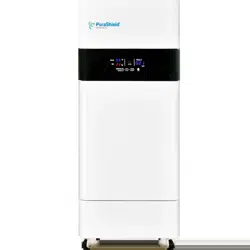Loading ...
Loading ...
Loading ...

13.
Special preventive measures
Waste disposal
Purafil's filter material is non-toxic, harmless and non-combustible. Purafil's filter material
removes gaseous pollutants by molecular adsorption, and the retired product usually does not cause
harm to the environment. Although special precautions are not usually required when waste filter
material is disposed of, government regulations may require specific disposal procedures if the
material is harmful to the environment. A large amount of Purafil filter material should not be discarded
in the garbage can, because the weight of the filter material will make it difficult to clean the garbage
can. If the pollutants removed from your environment include heavy metals and pesticides, an
independent toxicity laboratory analysis may be required.
Inhalation
It is recommended to replace Purafil filter material in a well ventilated working area, because the
abrasion between the particles of the filter material during the replacement will cause the new filter
material to produce dust. Workers should avoid direct inhalation of a large amount of filter dust as it
may cause sneezing. When replacing filter material in closed and unventilated spaces, a dust mask is
recommended for protection.
Water
Avoid exposing PURAFIL filter material to water or precipitation as this will dissolve the perman-
ganate. Purafil filter material should be stored in a dry environment with relative humidity lower than
95%. Exposing the skin to the permanganate solution will cause temporary brown staining without
injury, which can be removed in a diluted water and sodium bisulfite solution.
Eye exposure
If filter dust comes into contact with eyes, rinse the eyes thoroughly with water and seek medical attention.
* Refer to Purafil material's safety data sheet for other information.
Removal of filter material stains
The following stain removal procedures are for reference only and neither Purafil nor any of its
subsidiaries, nor any of Purafil's sales service providers or employees make any warranty or other
representation as to the efficiency or safety of the procedures.
Removal of stains may further damage clothing, items or tools used in an attempt to remove the
stains. If the dust in the PURAFIL filter material comes into contact with organic material, two dyeing
problems may occur:
1. Insoluble manganese dioxide (Mn0
2
), characterized by a medium brown color, may be found in
the consumed filter material and can usually be removed by 2 normal washing.
2. New (unused) Purafil filter material contains sodium permanganate (NaMnO₄), which is a
strong oxidant and will react with any organic material through contact and discolor it. The stains are
brown-black and can be removed from clothes in water with a sodium bisulfite solution.
However, if the fiber has been damaged by permanganate, the damage may be more conspicu-
ous when the stain is removed.
Warnings:
The cleaning process should start with the use of the solution at a very low concentration, and
the concentration of the solution should be gradually increased as required until the stains are
removed. Direct use of a high concentration solution may cause additional damage to the fabric.
Note:
Use of sodium bisulfite will release sulfur dioxide (SO) gas, so it must be used in a well ventilated area.
Loading ...
Loading ...
Loading ...
